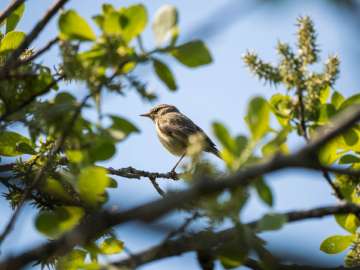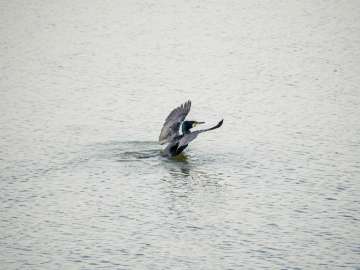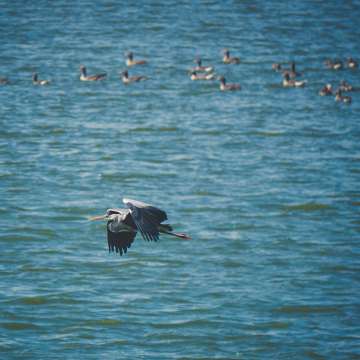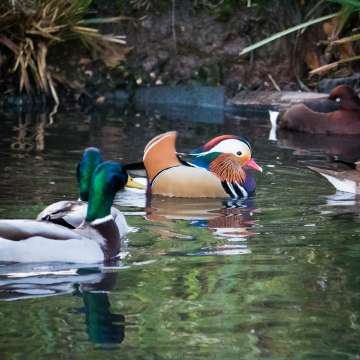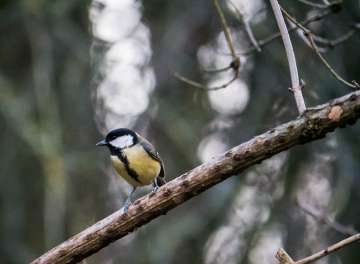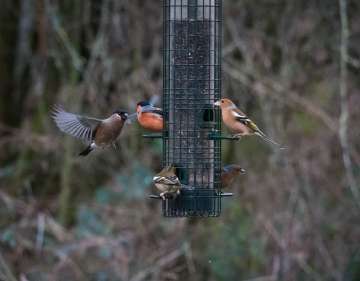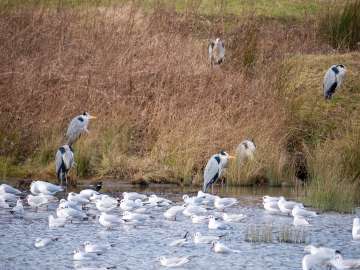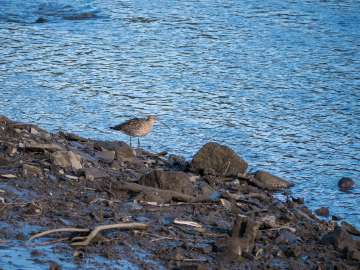Recently I have been tying to learn how to take better photos of birds. With a busy bird table in the back garden and a couple of local nature spots that are frequented by some more interesting specimens, I figured it can’t be that hard to get a great shot of a bird, right?
How to Photograph Birds
Let’s be clear. It’s hard, really very hard to get a great shot of any bird, especially ones that are not asleep!
So the first thing you are going to need is an abundance of patience, as well as an ability to anticipate bird behaviour and movements. Then you need to find some birds! The nearer you are to them and the stiller they are, the better!
Getting incredible shots of birds in flight won’t happen on your first attempt, unless it is simple beginners luck. Just getting a bird in focus while munching on the fat balls in the garden feeder was my first goal.
Best Camera Settings for Taking Pictures of Birds
Use back-button focus!
The biggest change to my photography since starting bird photography, has been changing my camera settings to enable what people call back button focus. Most cameras have various focus settings and nearly all come by default with the auto-focus set up to trigger from your shutter button. The problem with this is that it causes a delay every time you take a shot, while the camera hunts around to focus.
Your camera might be better than mine at focussing, but by enabling back button focus, you can completely eliminate this delay and therefore increase your chances of getting the shot you are after. In fact I do this on all photos now, not just bird photography.
Fast shutter speed, auto ISO and an aperture to suite your shot
I also switch to full manual aperture and shutter settings, putting ISO in auto mode. This approach lets you choose a shutter speed appropriate for the type of bird and behaviour you are photographing (different birds move more often and more quickly than others), as well as the type of shot you are after.
The aperture gives you the depth of field and you often want this low enough to blur the background. Letting the camera work out the ISO is a bit of a compromise as you can end up with a bit of grain in your shot when it ramps up the ISO. But I think getting a shot in focus is more important and some of that noise can be removed afterwards.
Generally your camera will need to be able set shutter speed to 1/1000th to 1/2000th of a second or higher in some cases.
Choosing the Best lens for Bird Photography
In all types of photography the answer to this one is always “the one you already have”! In bird photography this is more likely to be the one with the longest focal length, to stand any chance of getting your subject big enough to occupy the frame.
I have a pretty modest camera by many people’s standards, a Panasonic G80, which is a mirrorless camera. The longest lens I have is a zoom lens with a maximum focal length of 300mm. This is actually equivalent to a 600mm lens on a full frame camera. Of course the advantage of a mirrorless camera is that my camera and lens still fits in my bag and is much lighter to carry!
Got any tips for a novice?
Anyway, that’s what I have learnt so far and I’ll carry on experimenting. Why not leave a comment if you have other tips I might try.
